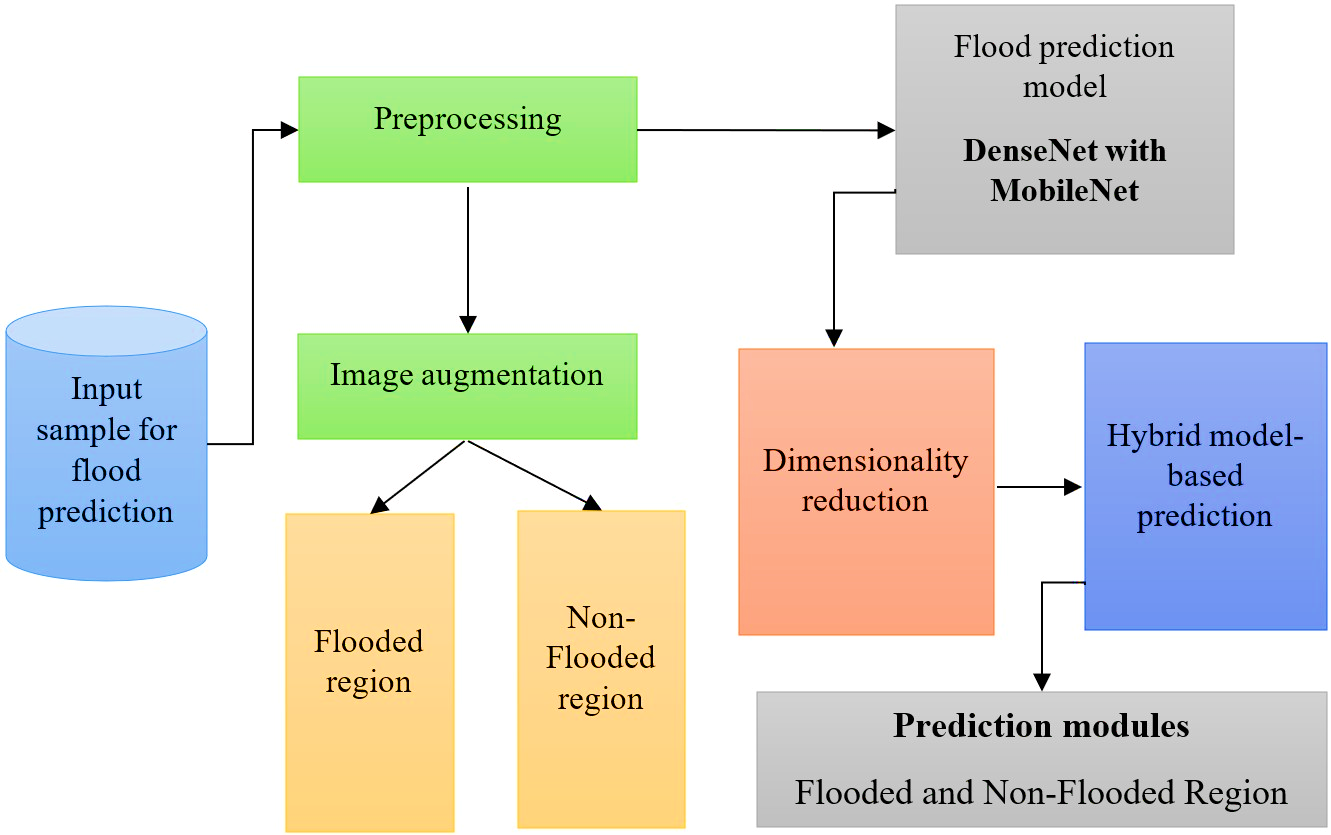-
VolumeVolume 27 (2025)
-
Issue
-
Pages1-12
- gnest_07438_final.pdf
-
Paper IDgnest_07438
-
Paper statusPublished

Many problems arise from the increasing rain, especially in urban areas where the drainage pipeline typically cannot quickly manage large amounts of water. Flood prediction is critical for effective disaster management and mitigation, particularly in urban regions prone to severe flooding. Meanwhile, large amounts of data cannot be handled by typical flood detection models, which are unreliable for complicated processes. Deep learning (DL) approaches are frequently used in flood control to solve these issues and enhance the functionality of conventional flood detection systems. A new deep hybrid model called MobileNet-DenseNet, which uses a training method, is presented to predict floods. The filtering approach is used to preprocess the raw satellite image. Next, the pre-processed image is divided into segments using the weighted clustering technique. Using the retrieved feature set, a hybrid model is applied to the features to predict floods. Additionally, during the training phase, the combination data augmentation is used to choose the optimal weights for the hybrid models, thus improving their prediction performance. By adding extra neural layers to deep neural networks, this hybrid method increases their effectiveness while reducing the number of errors. The experimental findings unequivocally show that the suggested study project has met the following analytical standards: sensitivity of 94%, specificity of 98%, accuracy of 95%, FNR of 0.02%, and FPR of 0.02%.
Total file downloads: 4